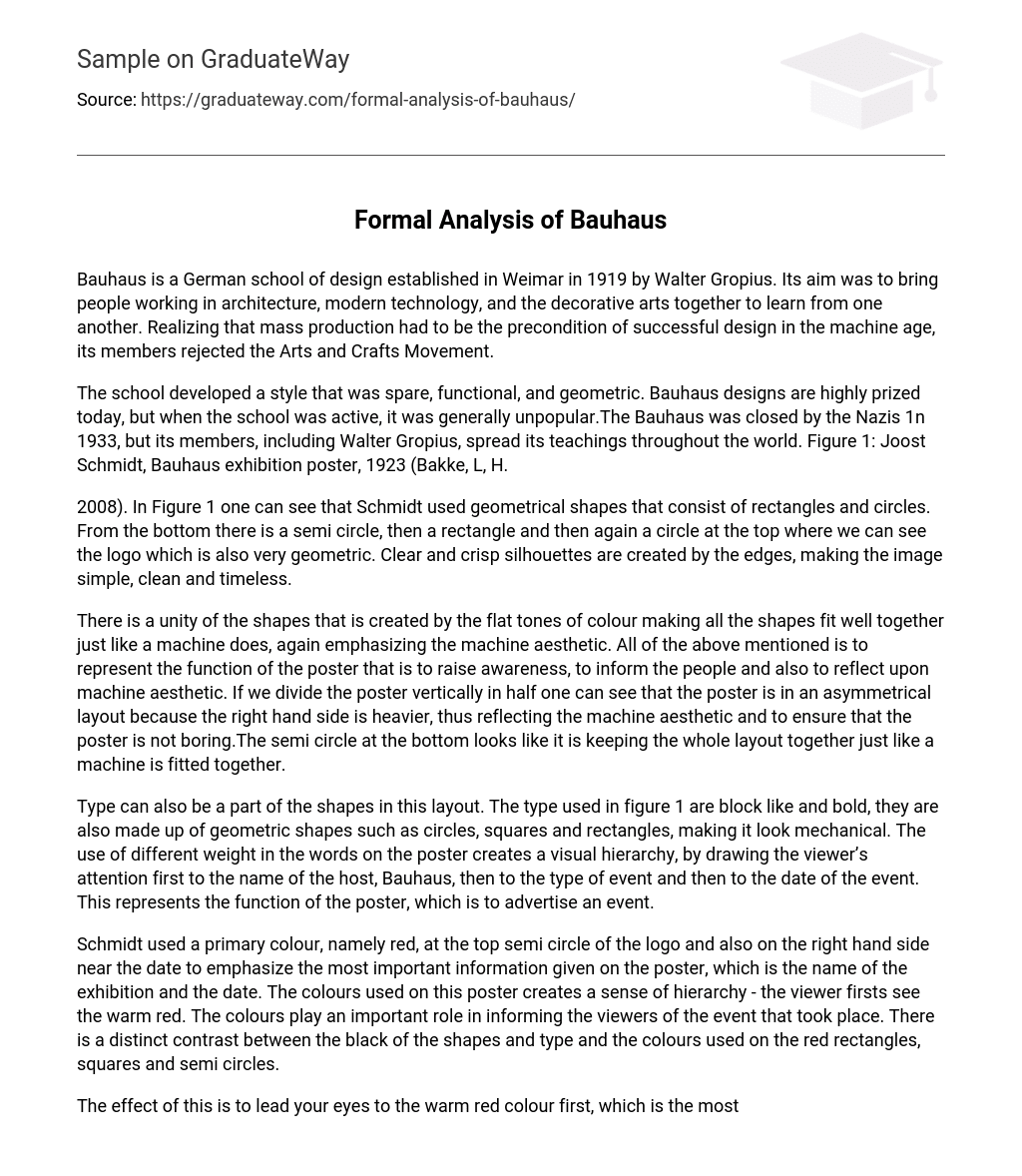The Bauhaus, a German design school founded in 1919 by Walter Gropius in Weimar, sought to unite individuals working in architecture, modern technology, and the decorative arts to foster mutual learning. Recognizing the importance of mass production in the era of machinery, the members of the Bauhaus rejected the principles of the Arts and Crafts Movement.
The Bauhaus school, known for its spare, functional, and geometric style, was not widely appreciated during its active period but is now highly valued. In 1933, the Nazis closed down the school; however, its members, including Walter Gropius, disseminated its teachings globally. Figure 1 showcases Joost Schmidt’s Bauhaus exhibition poster from 1923 (Bakke, L, H).
2008). Figure 1 displays Schmidt’s use of geometric shapes, specifically rectangles and circles. The arrangement starts with a semi circle at the bottom, followed by a rectangle, and concludes with another circle at the top, which also serves as the geometric logo. The edges of these shapes create distinct and clean outlines, resulting in a simple, crisp, and timeless image.
The flat tones of color create a unity of shapes, similar to a machine, emphasizing the machine aesthetic. This represents the poster’s function of raising awareness, informing people, and reflecting on machine aesthetic. The asymmetrical layout, with the heavier right-hand side, reflects the machine aesthetic and prevents the poster from being boring. The semi-circle at the bottom functions like a machine fitting everything together.
Type in this layout can also contribute to the overall design. The type used in figure 1 has a block-like and bold appearance, featuring geometric shapes like circles, squares, and rectangles. This gives it a mechanical look. Additionally, the use of varying weights in the words on the poster establishes a visual hierarchy. It first draws the attention of the viewer to the name of the host, Bauhaus, then to the type of event, and ultimately to the date of the event. This effectively serves the purpose of advertising the event.
Schmidt utilized the primary color, red, in the upper semicircle and on the right side near the date to highlight the essential information on the poster, namely the exhibition’s name and date. These colors establish a hierarchy, with the warm red being the first thing viewers notice. The colors also play a significant role in conveying the event to the audience. There is a clear contrast between the black shapes and typography and the colors employed in the red rectangles, squares, and semicircles.
The Warm red color is the most important information, making the poster visually appealing. The beige background contrasts with the tints and tones on the shapes, where black is predominantly used to highlight the machine, providing crucial details to the viewer.
The logo is composed of geometric shapes and lines, giving the impression that it is made up of a single line. This highlights the simplified and mechanical nature of the products. Additionally, the logo symbolizes people. The shapes and lines are arranged in a diagonal from the left to the right corners, along with a smaller diagonal formed by the word “Austellung” and a smaller rectangle on the right. This arrangement adds dynamism and creates a sense of movement.
In summary, the initial works of the Bauhaus school were primarily concerned with the functionality of their creations. Specifically, the posters had a purpose of advertising, informing, and providing information to the audience.





